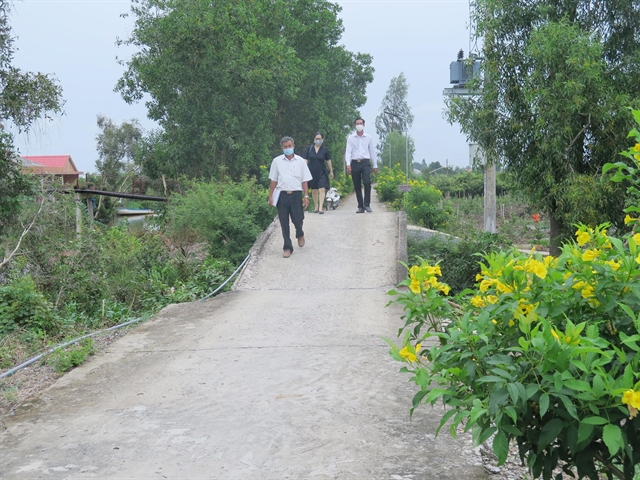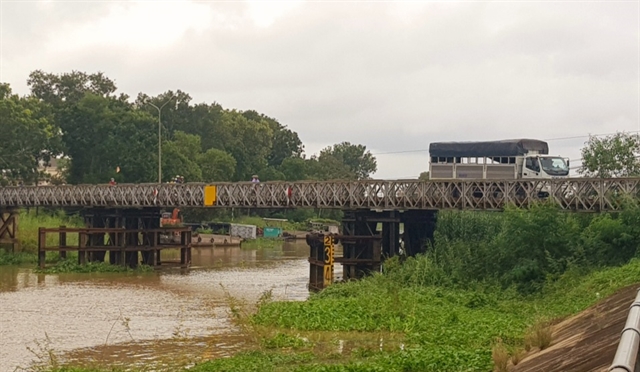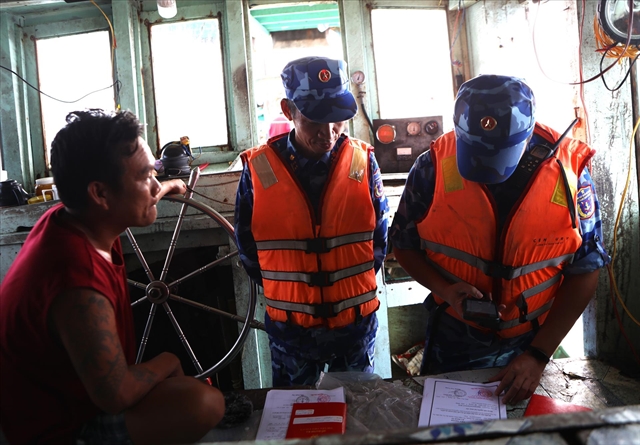 Society
Society

 |
| A rural road with a bridge in Tân Tây Commune, Thạnh Hoá District, Long An Province. The province is building a number of new rural roads to facilitate travel for people and the transport of goods in rural areas. – VNA/VNS Photo Minh Hưng |
LONG AN – Long An Province is prioritising development of transport infrastructure, with a focus on building new bridges and rural roads.
The Cửu Long (Mekong) Delta province is building new concrete bridges to replace old ones along intra-provincial roads.
On Provincial Road 831, running through the border districts of Tân Hưng and Vĩnh Hưng, are being built six concrete bridges to replace old iron ones.
Construction of the Canal 28 Bridge, one of the six, began in June and is expected to be completed in December 2025. Construction of the rest will begin this quarter and early next year.
They will cost nearly VNĐ290 billion (US$11.7 million) and are estimated to be completed by 2027.
Provincial Road 831 links Long An and Đồng Tháp provinces, and plays an important role in Long An’s socio-economic development, national security and regional connectivity, according to the province Department of Transport.
Đặng Hoàng Tuấn, director of the department, said the province also has 19 other old iron bridges.
Of them, six are on Provincial Road 817, which runs through the districts of Thủ Thừa, Thạnh Hoá and Mộc Hoá, and will be built in 2025, with the rest completed between 2026 and 2030, he said.
 |
| An old iron bridge on Provincial Road 831 in Long An that has deteriorated. The province is implementing a project to replace six old iron bridges on the road with concrete ones. – Photo baolongan.vn |
Rural roads
Long An is implementing a plan to support the construction of rural roads on a pilot basis between 2024 and 2025 to meet developmental needs and accelerate the building of new-style rural areas.
Funding for it comes from the province, private investors and the public.
Under the plan, the province has begun construction of a road along KT 8 Canal in Khánh Hưng Commune, Vĩnh Hưng District, between the hamlets of Bàu Sen and Tà Nu.
The road is 3.5 km long, 4 metres wide, and will cost VNĐ8.5 billion (US$340,000).
Vicem Hà Tiên Cement Joint Stock Company has donated 1,247 tonnes of cement worth VNĐ2.4 billion (US$97,000) for its construction. The district administration has provided VNĐ4.3 billion (US$173,000) for buying sand and rocks, and the commune is covering the remaining costs like workers’ wages and machinery rents.
Trần Văn Cường, chairman of the Vĩnh Hưng District People’s Committee, said that for the 2024-25 plan, the district is being allocated around 5,000 tonnes of cement to construct 13.9 km of hamlet roads.
“The construction of these roads is crucial for meeting the transport needs of local people, ensuring safe travel, and contributing to the district’s socio-economic development.”
Nguyễn Minh Lâm, deputy chairman of the province People’s Committee, has called on localities to take all necessary measures and mobilise all available resources to effectively implement approved projects under the plan.
He also urged authorities at all levels to monitor construction quality and spending.
Relevant departments and sectors must strictly fulfil the tasks assigned by the province People’s Committee, he said.
The public has actively contributed to the construction of rural roads by donating land, money and labour.
Nguyễn Công Hầu of Phước Lý Commune in Cần Giuộc District donated 1,000 sq.m of land to widen a road in his neighbourhood.
“I see that widening the road helps students travel to school easier and enables people to transport goods,” he said.
The province aims to construct 153 km of hamlet roads at least four metres wide between 2024 and 2025.
A resolution issued by the 11th Provincial Party Congress, term 2020-2025, called for mobilising all resources to develop a comprehensive transport infrastructure system.
The province has 8,827 km of roads now, including 1,119 km of earthen roads.
The network is largely completed, contributing to socio-economic development and ensuring national defence and security, according to Tuấn.
The completion of key transport projects to enable industrial and urban development has instilled confidence in investors and attracted them to the province, he said.
Long An has an important position in the southern region as the gateway between the Mekong Delta and the southeastern region, bordering Cambodia and HCM City and located in the southern key economic zone. – VNS




